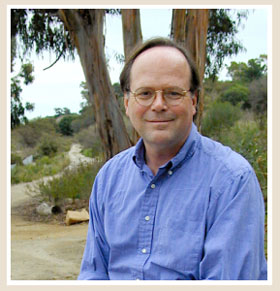One out of every six countries in the world is facing food shortages this year because of severe droughts that could become semi-permanent due to climate change. In many developing nations, coping with hydrologic extremes is the equivalent to war in terms of cost and potential outcome. Drought and famine are slow onset disasters that present a variety of early climatic and socioeconomic indicators that dire conditions may evolve. Nonetheless, the drought of the early 1970s was responsible for 100,000 deaths in the Sahel and 200,000 deaths in Ethiopia, and was soon followed by drought in 1983-1985 that saw deaths in Ethiopia estimated from 400,000 to 1 million. These large-scale famines shocked the world and pointed up the tragic lack of timely information that might serve to head off human suffering of huge proportions. Responding to the concern of the American people, the U.S. Congress called on the United States Agency for International Development to create the Famine Early Warning System (FEWS) in 1985.
UCSB involvement with FEWS began in 1997 with the arrival on campus of a senior U.S. Geological Survey (USGS) scientific manager (Jim Verdin, International Program) to begin work on a dissertation dealing with geospatial climate information products for food security assessment. Professional working relationships that developed in the course of this work led to establishment of cooperative agreements between USGS and UCSB for further research in this and related areas. Sponsored students have been directed by Professors Joel Michaelsen, Leal Mertes, and Dar Roberts, one of whom (Tamuka Magadzire) was the USGS FEWS NET field scientist for Southern Africa and earned an M.A. in Geography on mapping flood inundation using landsat data. UCSB Geography graduate Jeremy Freund was also hired by USGS to participate in hydroclimatic monitoring, analysis, and forecasting for Africa and Central America. Beginning in 2002, scientists at UCSB have regularly participated in weekly virtual meetings of NOAA, USGS, NASA, and Chemonics to review hydroclimatic conditions in Africa and determine content for the Africa Weather Hazards Assessment (AWHA) for the week ahead.
In the fall of 2003, the Climate Hazard Group (CHG) was established at UCSB to facilitate links between the International Program at the USGS EROS Data Center, five USGS-affiliated field scientists in Niger, Harare, Nairobi, and Guatemala, a coordinating scientist in Washington (Saud Amer), and a team of five research scientists at UCSB led by Professor Joel Michaelsen. The goal of the CHG is to develop and apply improved flood and drought monitoring tools. The 2003-04 research season saw improved links between UCSB science staff and collaborators at the EROS data center, and research should continue for at least the next several years. The objective of this cross-fertilization is to share expertise, enhancing drought monitoring in the United States and the developing nations of Africa, Southern Asia, and Central America.
Dr. Michaelson’s work is currently being funded by a multi-year USGS grant ($1,727,959 plus supplements for years one and two) for his proposal Spatially Explicit Modeling and Monitoring of Hydroclimatic Extremes: Reducing the Threat to Food security in the Developing World. Dr. Michaelson’s Co-PI is Assistant Researcher Chris Funk, his Post-doctoral Researcher is Greg Husak, and his Graduate Student Assistant is Jeremy Freund. Most of the text above was taken directly from the proposal—click here for Chris Funk’s comprehensive report on the UCSB Climate Hazard Group’s activities.



